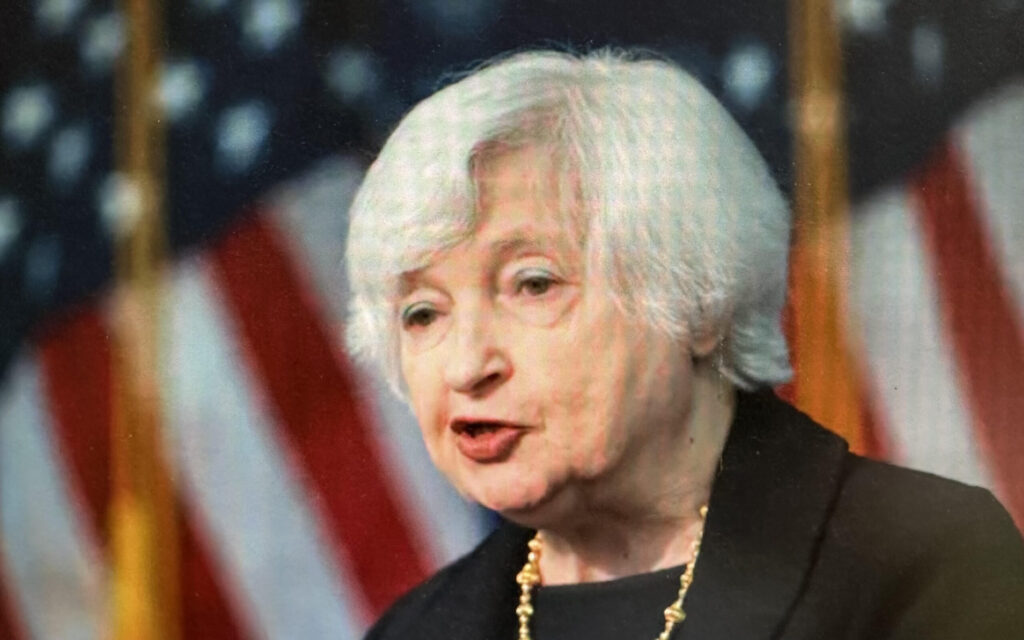
The debt ceiling standoff between President Biden and House Republicans has reached a moment of truth. Yesterday, suddenly and belatedly, Treasury Secretary Yellen warned that June 1 could be the “X date.”
That’s the date on which our Treasury can no longer employ “extraordinary measures” to keep the nation’s debt below the current ceiling and avoid default. Why is the deadline so much sooner than expected?
April tax receipts came in far below expectations, and Uncle Sam has been spending more and more money every month. Last year in April, record individual and corporate income tax receipts of $682 billion delivered a federal surplus of $308 billion for the month.
That was enough to cover monthly deficits going forward: May ($66 billion), June ($89 billion) and most of July ($211 billion). This year, though, is different. The surplus this April was about half that of last April.
Income tax receipts fell about $90 billion to $592 billion, according to Daily Treasury Statements. The revenue decline was evident well before month end. On the expense side, just three large monthly items are running about $53 billion higher.
Specific April 2023 expenses have yet to be tallied. In March 2023, though, Social Security was up $12 billion over April 2022, Medicare was up $18 billion, and — you guessed it — net interest on the national debt was up $23 billion, according to the Monthly Treasury Statement for March.
This April’s revenue collapse and the higher expense level implies an April surplus of only $165 billion, and the $53 billion increase in monthly expense implies much higher monthly deficits ahead: $119 billion in May and $142 billion in June. We won’t get to mid-June.
Quite evidently, Ms. Yellen has not been reading reports produced by her own department. Cash balances in the Treasury General Account confirm this outlook. They are already plunging from a modest peak on April 25 of $316 billion to $238 billion on May 1.
This cash flow analysis contains a larger message. The fact that net interest is growing by larger monthly amounts ($23 billion) than Social Security and Medicare, the two largest items in the federal budget, highlights that there is a serious debt crisis underlying the debt ceiling standoff.
The current debt ceiling is set at the stratospheric level of $31.4 trillion. That’s more than $100,000 for every man, woman and child in this country. What is even more stunning is the level of interest on the debt. In the first six months of the current federal fiscal year, net interest reached an annualized level of $602 billion.
Interest is rising rapidly, as Treasury securities mature and must be rolled over at today’s higher interest rates — 90-day T-bills are yielding about 5 percent and 10-year Treasuries about 3.5 percent, well above the embedded interest rate of about 2 percent on the nation’s debt ($602 billion on $31.4 trillion).
It is hard not to conclude that the nation must rein in its debt habit. This favors Speaker McCarthy in upcoming negotiations. Moreover, while President Biden diddled with his refusal to negotiate, Mr. McCarthy spent the last three months rallying and unifying the House GOP around a specific debt containment plan.
The plan, the “Limit, Save, Grow Act,” raises the debt ceiling by $1.5 trillion, or until March 2024, whichever comes first. The $1.5 trillion will come first — before the end of September, since Treasury will have to play catch up and issue all the debt that it has not issued since January while employing “extraordinary measures” plus the “normal” amount of debt over the next five months.
In face of this deluge, the GOP plan rolls back spending immediately, specifically returning fiscal 2024 domestic spending to fiscal 2022 levels. The GOP position is compelling. If we were able to live within this level of federal spending less than a year ago, why can’t we live within it less than a year from now?
Yet, Mr. Biden and his fellow Democrats will attempt to paint the plan as draconian and their no-conditions stance as prudent. Perhaps unknowingly, they will be arguing in favor of the debt disaster that the debt ceiling crisis is making manifest.
The extremism charge is likely to come back like a boomerang, highlighting the Administration’s level of deficit spending — in just the first six months of fiscal 2023, the deficit has reached $1.1 trillion.
To approve a debt limit increase with no conditions, as Mr. Biden has demanded, would be to encourage ever more deficit spending, precisely what has gotten us into our present disastrous predicament. Moreover, Biden’s refusal to negotiate will surely be viewed as blameworthy for any financial calamity.
Congress has the right and obligation to exercise its constitutional control over spending. Any failure to force negotiations over spending would be an abdication of Congress’ responsibility under the Constitution.
![]()
Red Jahncke is a nationally recognized columnist, who writes about politics and policy. His columns appear in numerous national publications, such as The Wall Street Journal, Bloomberg, USA Today, The Hill, Issues & Insights and National Review as well as many Connecticut newspapers.


